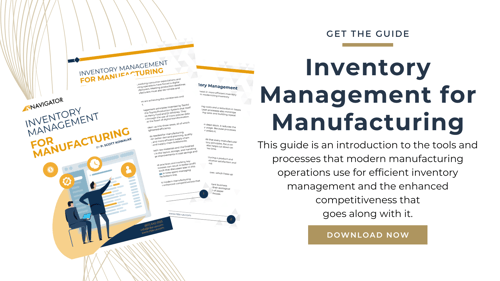
Automation: The Core of Efficient Inventory Management
As accurate and efficient as employees can be in the inventory department, machines are better at it. Manufacturers already know that robotic process automation improves manufacturing quality and performance, and the same technique can be applied to a manufacturer’s inventory department through inventory process automation and the backend systems that enable it.
We are breaking down our 'Inventory Management for Manufacturing' guide into digestible sections. You can get the full inventory management guide here.
When inventory management processes are largely automated, predefined standard processes can be enforced and executed without the deviations and inefficiencies that creep in with manual inventory processes.
There are six main elements involved in inventory automation.
- Automated mobile data collection:
Automation helps increase inventory data accuracy and productivity by eliminating tedious manual capture and input processes. - Inventory management systems (IMS):
Comprehensive inventory control software offers better inventory control as well as real-time visibility of stock levels, storage locations, and product information. - Warehouse management system (WMS):
WMS solutions provide direct receiving, putaway, picking, packing, shipping, and space utilization information along optimized routes. This streamlines and accelerates all of these important warehousing tasks. - Automated storage and retrieval systems:
These can include cranes, enabling stock to be stacked vertically for higher storage densities and improved space utilization. Conveyers and automated vertical carousels may also be used to move stock and improve space optimization.
- Industrial robots:
Robots are increasingly being used for palleting, de-palleting, packaging, commissioning and order pickup. They are also capable of identifying and tracking containers using barcodes and RFID tags. - Radio data terminals:
These terminals are usually handheld or truck-mounted and use radio to connect to logistics automation software. They provide instructions to operators moving throughout the warehouse and often have barcode scanners to enable the identification of containers quickly and accurately.
Read the next section, When to invest in inventory automation
